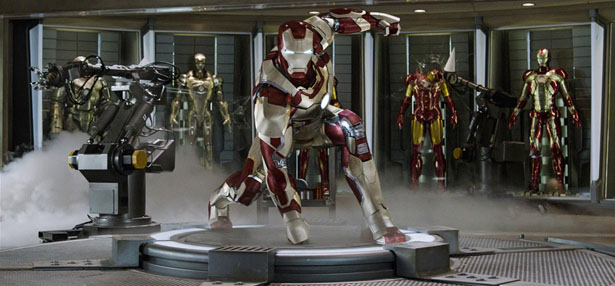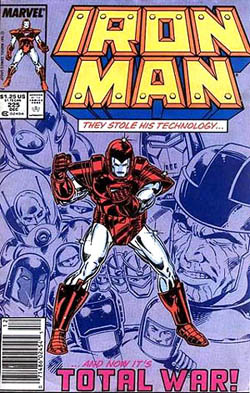Iron Man, 3-D Printing and the Responsibility of Power

If you’ve seen Iron Man 3, you know that – SPOILER ALERT!!!! – billionaire inventor Tony Stark reveals dozens of specialized Iron Man power suits. As fantastic as the suits are, the technology Stark likely uses to make them is not far removed from reality – and neither are the big questions that such technology raises.
I’m not talking about the technology in the suit (no one has built an arc reactor – yet). I’m talking about the tech Stark used to make the suit. Stark has become so obsessed with tinkering that he can’t stop modifying the suits and making new ones. Something makers everywhere can identify with.
Two terms that get thrown around a lot are “3-D printing” and “additive manufacturing.” The mechanisms behind these approaches are very different, but the concepts are more or less the same: creating three-dimensional objects of almost any design out of a raw material. The difference, to the extent there is one, is that 3-D printing tends to refer to making objects out of polymers, whereas additive manufacturing often refers to making objects out of metallic powder.
These technologies, creating prototypes seemingly from thin air, are what you’d expect to find in Stark’s lab. But increasingly, these technologies can be found in basements, garages and other workspaces of amateur inventors. The ability to turn a concept into a prototype is no longer solely the realm of comic-book billionaires.

This creates ethical dilemmas for the inventor. For example, should some ideas not become realities? In the Iron Man comics, Dr. Doom and other villains use Stark’s technology to hurt people and advance their evil purposes – which was not Stark’s intent at all.
In recent weeks, news reports have drawn attention to a man in Texas who used 3-D printing to create a gun, which he then successfully fired. Using 3-D printing to create guns would make obtaining a firearm virtually untraceable – anyone with a 3-D printer could make one, and a 3-D printer can be had for a few hundred dollars. And, as of May 9, it was reported that plans for the 3-D printable gun had been downloaded more than 100,000 times.
Will the technology be used for nefarious purposes? No one knows, but that is a question that merits consideration.
At the same time, it is important to acknowledge what 3-D printing technology means for innovation. It is not only being used to create untraceable guns – it has enormous potential.
University researchers use it to create everything from aircraft parts to prosthetic implants. Entrepreneurs can create the models they need to test new concepts or attract investors.
The White House has made additive manufacturing a priority for a reason. This is a tool that could significantly advance the way we pursue ideas.
We just have to be at least as smart as Tony Stark about how we do it.
Note: Many thanks to Suveen Mathaudhu, for talking with me about 3-D printing, additive manufacturing and all things Iron Man. Mathaudhu is a program manager in the materials science division of the U.S. Army Research Office, an adjunct materials science professor at NC State University and a hardcore comics fan. Any mistakes are mine, not his.
- Categories:


